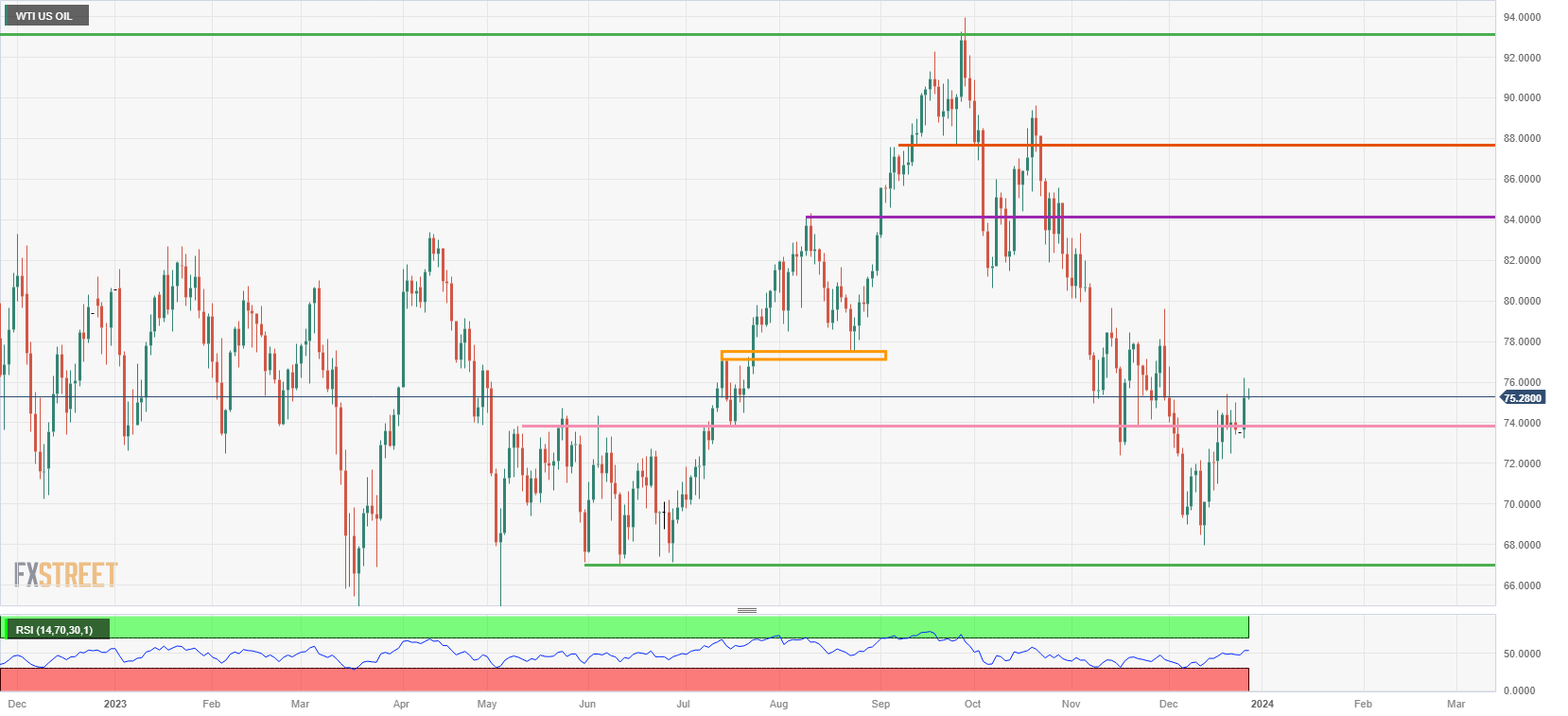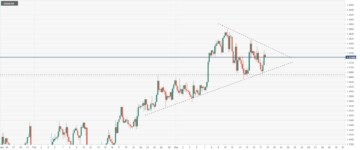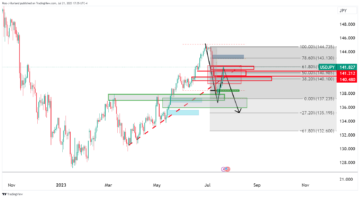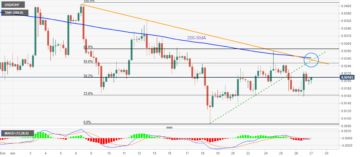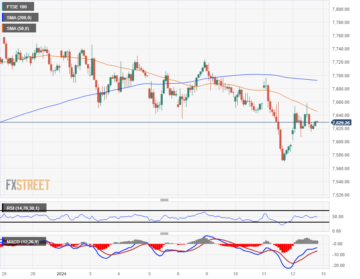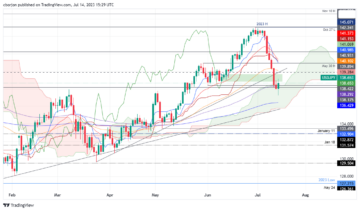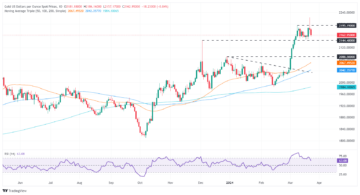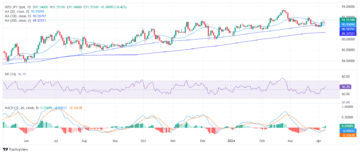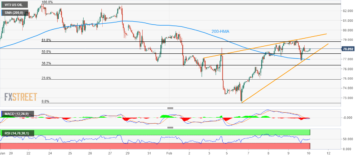- WTI Oil snaps above 75 after Houthi Rebels hit a commercial ship.
- Russian Oil loading in Black Sea halted due to severe storms.
- The DXY US Dollar Index flirts with more downside.
Oil prices are set to pop higher with a pickup in demand. The demand comes from Indian refiners, the third biggest in the world, who are purchasing oil from nearby Middle Eastern countries for immediate delivery. The surge in demand comes as those Indian refiners face heafty delays of several weeks with their oil taking the long road around Africa, in order to avoid being attacked by Houthi rebels in the Red Sea.
The US Dollar (USD) meanwhile is again residing near session lows with the Greenback not finding any support amidst all these geopolitical tensions. With US equities slowly but surely reaching all time highs, the risk-on sentiment in that asset class is the main driver for the devaluation of the US Dollar. The Greenback has no catalyst or main driver for now that could spark a turnaround.
Crude Oil (WTI) trades at $75.27 per barrel, and Brent Oil trades at $80.45 per barrel at the time of writing.
Oil News and Market Movers: Delays materializing
- India buying up oil from near Middle Eastern countries for quick delivery, to circumvent the late deliveries of crude stock for their cracking and refining activities.
- Reuters reports that Russia has halted Crude loadings in port Novorossiysk, due to severe weather conditions in the Black Sea.
- Linked to the above, Kazakhstan is reporting it is pausing its Oil output with the Caspian Pipeline Consortium (CPC) halting acceptance. Meanwhile presss agency Tass reported that the deliveries are back online since this afternoon.
- Houthi Rebels attacked a commercial MSC United ship in the Red Sea on Tuesday.
- Deputy Prime Minister Alexander Novak said in an interview at Rossiya 24 TV Channel that Brent prices are to average $80-85/bbl in 2024. Russian Oil producers are complying with OPEC+ production restrictions.
Oil Technical Analysis: Crude faces ramp up in demand
Oil prices are on track to hit $85 within a few weeks at this pace. The markets are redirecting their view as the current economic slowdown might be priced in, in full, Any hiccup in any way or form for the supply side could mean an uptick for Crude prices in the coming weeks.
On the upside, $74 got broken and tested for support, offering more upside. Once through there, $80 comes into the picture. Although still far off, $84 is next on the topside once Oil sees a few daily closes above the $80 level.
Below $74, the $67 level could still come into play as the next support level to trade at as it aligns with a triple bottom from June. Should that triple bottom break, a new low for 2023 could be close at $64.35 – the low of May and March – as the last line of defence. Although still quite far off, $57.45 is worth mentioning as the next level to keep an eye on if prices fall sharply.
US WTI Crude Oil: Daily Chart
WTI Oil FAQs
WTI Oil is a type of Crude Oil sold on international markets. The WTI stands for West Texas Intermediate, one of three major types including Brent and Dubai Crude. WTI is also referred to as “light” and “sweet” because of its relatively low gravity and sulfur content respectively. It is considered a high quality Oil that is easily refined. It is sourced in the United States and distributed via the Cushing hub, which is considered “The Pipeline Crossroads of the World”. It is a benchmark for the Oil market and WTI price is frequently quoted in the media.
Like all assets, supply and demand are the key drivers of WTI Oil price. As such, global growth can be a driver of increased demand and vice versa for weak global growth. Political instability, wars, and sanctions can disrupt supply and impact prices. The decisions of OPEC, a group of major Oil-producing countries, is another key driver of price. The value of the US Dollar influences the price of WTI Crude Oil, since Oil is predominantly traded in US Dollars, thus a weaker US Dollar can make Oil more affordable and vice versa.
The weekly Oil inventory reports published by the American Petroleum Institute (API) and the Energy Information Agency (EIA) impact the price of WTI Oil. Changes in inventories reflect fluctuating supply and demand. If the data shows a drop in inventories it can indicate increased demand, pushing up Oil price. Higher inventories can reflect increased supply, pushing down prices. API’s report is published every Tuesday and EIA’s the day after. Their results are usually similar, falling within 1% of each other 75% of the time. The EIA data is considered more reliable, since it is a government agency.
OPEC (Organization of the Petroleum Exporting Countries) is a group of 13 Oil-producing nations who collectively decide production quotas for member countries at twice-yearly meetings. Their decisions often impact WTI Oil prices. When OPEC decides to lower quotas, it can tighten supply, pushing up Oil prices. When OPEC increases production, it has the opposite effect. OPEC+ refers to an expanded group that includes ten extra non-OPEC members, the most notable of which is Russia.
- SEO Powered Content & PR Distribution. Get Amplified Today.
- PlatoData.Network Vertical Generative Ai. Empower Yourself. Access Here.
- PlatoAiStream. Web3 Intelligence. Knowledge Amplified. Access Here.
- PlatoESG. Carbon, CleanTech, Energy, Environment, Solar, Waste Management. Access Here.
- PlatoHealth. Biotech and Clinical Trials Intelligence. Access Here.
- Source: https://www.fxstreet.com/news/oil-picks-up-steam-with-red-sea-tensions-arising-and-russian-oil-loading-suspended-202312271140
- :has
- :is
- :not
- $UP
- 13
- 2023
- 2024
- 24
- 32
- 35%
- 66
- 75
- a
- above
- acceptance
- activities
- affordable
- africa
- After
- again
- agency
- Alexander
- Aligns
- All
- also
- Although
- American
- amidst
- an
- analysis
- and
- Animate
- Another
- any
- api
- ARE
- around
- AS
- asset
- asset class
- Assets
- At
- average
- avoid
- back
- BE
- because
- being
- Benchmark
- Biggest
- Black
- Bottom
- Break
- brent
- Broken
- but
- Buying
- by
- CAN
- Caspian Pipeline Consortium (CPC)
- Catalyst
- Changes
- Channel
- Chart
- circumvent
- class
- Close
- Closes
- collectively
- come
- comes
- coming
- coming weeks
- commercial
- complying
- conditions
- considered
- consortium
- content
- could
- countries
- cracking
- Crossroads
- crude
- Crude oil
- Current
- daily
- data
- day
- decide
- decisions
- defence
- delays
- Deliveries
- delivery
- Demand
- Devaluation
- Disrupt
- distributed
- Dollar
- dollar index
- dollars
- down
- downside
- driver
- drivers
- Drop
- Dubai
- due
- Dxy
- each
- easily
- eastern
- Economic
- effect
- EIA
- ends
- energy
- Every
- expanded
- extra
- eye
- Face
- faces
- Fall
- Falling
- FAQ
- far
- few
- finding
- For
- form
- frequently
- from
- full
- geopolitical
- Global
- got
- Government
- gravity
- Greenback
- Group
- Growth
- halting
- High
- higher
- Highs
- Hit
- HTTPS
- Hub
- if
- immediate
- Impact
- in
- includes
- Including
- increased
- Increases
- index
- india
- Indian
- indicate
- information
- instability
- Institute
- Intermediate
- International
- Interview
- into
- inventory
- IT
- ITS
- june
- Kazakhstan
- Keep
- Key
- Last
- Late
- Level
- Line
- loading
- Long
- looking
- Low
- lower
- Lows
- Main
- major
- make
- March
- Market
- Markets
- May..
- mean
- Meanwhile
- Media
- meetings
- member
- Members
- Middle
- might
- minister
- module
- more
- most
- Movers
- Nations
- Near
- New
- news
- next
- no
- notable
- now
- of
- off
- offering
- often
- Oil
- oil price
- oil producers
- on
- once
- ONE
- online
- opec
- opposite
- or
- order
- organization
- Other
- output
- Pace
- pausing
- per
- Petroleum
- picking
- Pickup
- picture
- pipeline
- plato
- Plato Data Intelligence
- PlatoData
- Play
- political
- pop
- predominantly
- price
- Prices
- Prime
- prime minister
- Producers
- Production
- published
- purchasing
- Pushing
- quality
- Quick
- quite
- Ramp
- reaching
- Red
- referred
- refers
- refined
- refining
- reflect
- relatively
- reliable
- report
- Reported
- Reporting
- Reports
- restrictions
- Results
- road
- Russia
- russian
- Russian oil
- Said
- Sanctions
- SEA
- sees
- sentiment
- session
- set
- several
- severe
- should
- Shows
- side
- similar
- since
- Slowdown
- Slowly
- sold
- sourced
- Spark
- stands
- starts
- States
- Still
- stock
- storms
- such
- supply
- Supply and Demand
- support
- support level
- surely
- surge
- taking
- Technical
- Technical Analysis
- ten
- tensions
- tested
- texas
- that
- The
- the world
- their
- There.
- These
- Third
- this
- those
- three
- Through
- Thus
- tighten
- time
- to
- track
- trade
- traded
- trades
- Triple
- Tuesday
- tv
- type
- types
- United
- United States
- Upside
- us
- US Dollar
- US Dollar Index
- US Dollars
- US oil
- USD
- usually
- value
- via
- vice
- View
- Way..
- Weather
- weekly
- Weeks
- West
- when
- which
- WHO
- with
- within
- world
- worth
- writing
- WTI
- WTI Crude
- zephyrnet

